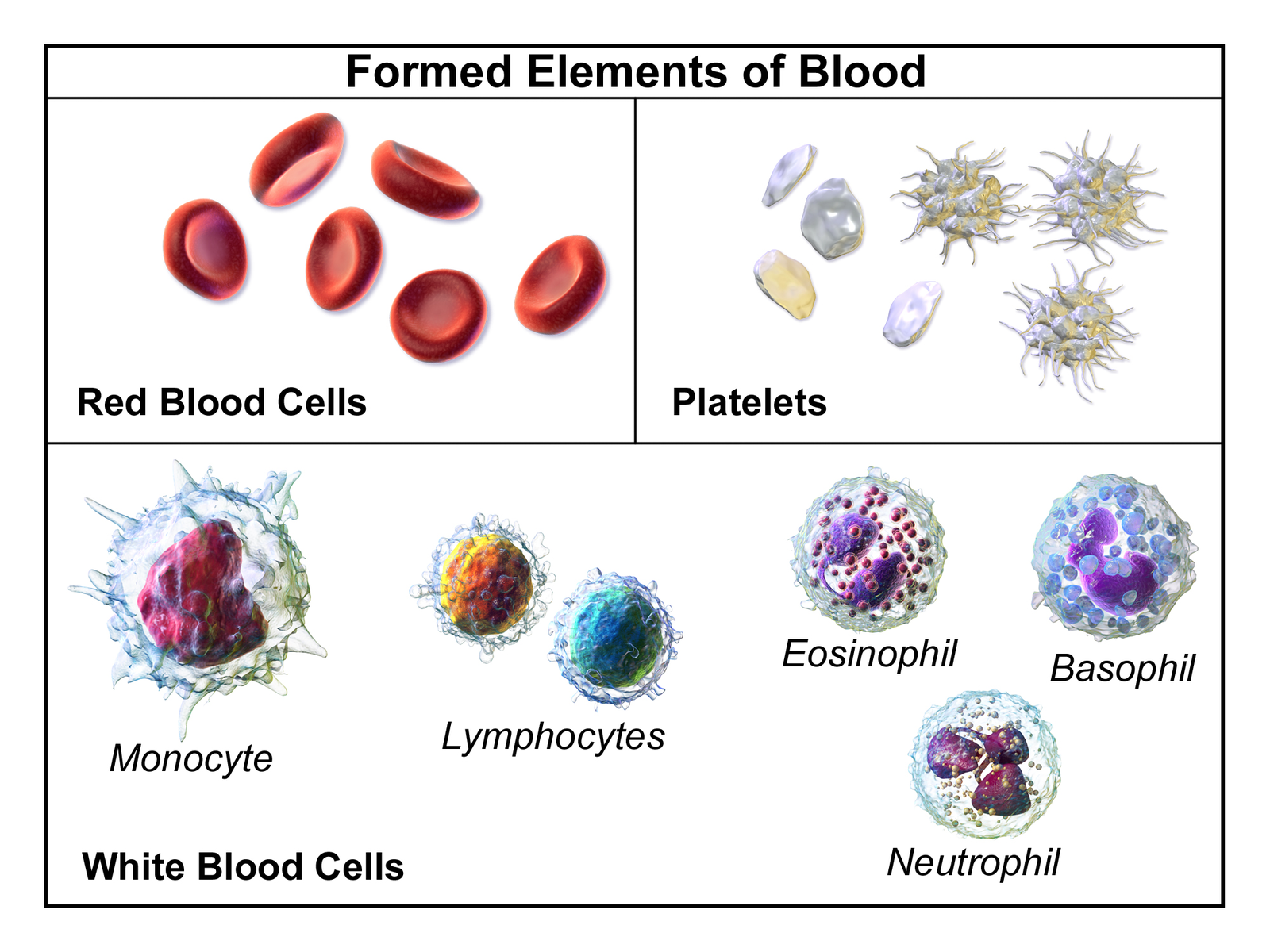Table of Contents |
Leukocytes is another word for white blood cells. White blood cells are a component of blood that play a role in the body's defense system. Recall that other components of blood are red blood cells and platelets, which play a role in blood clotting.

There are five different types of leukocytes, and each has a different role in helping to clean up the body, remove old cells, destroy bacteria, fight infection, et cetera.
They are broken up into two groups of either granulocytes or agranulocytes.
| Types of Leukocytes | |
|---|---|
|
Granulocytes Types of white blood cells that have visible granules in their cytoplasm. These granules are a type of enzyme and are visible when the cell is stained. |
Basophils: These cells play a role in which the body helps defend itself against certain types of pathogens. When their granules are released from the cell, it contributes to inflammation. Also referred to as mast cells. |
| Eosinophils: These cells target parasites too big for phagocytosis. If somebody has a parasite, such as worms, eosinophils are the type of white blood cell that would target those and help to get rid of it. | |
| Neutrophils: These cells target bacteria and fungi. | |
|
Agranulocytes Types of white blood cells that do not have those visible granules in their cytoplasm. |
Lymphocytes: These cells are responsible for carrying out specific immune responses and primarily attack cells (for example, attacking cancerous and virus-infected cells). There are two types of lymphocytes, T and B cells. |
| Monocytes: These cells develop into macrophages and then engulf microbes. | |